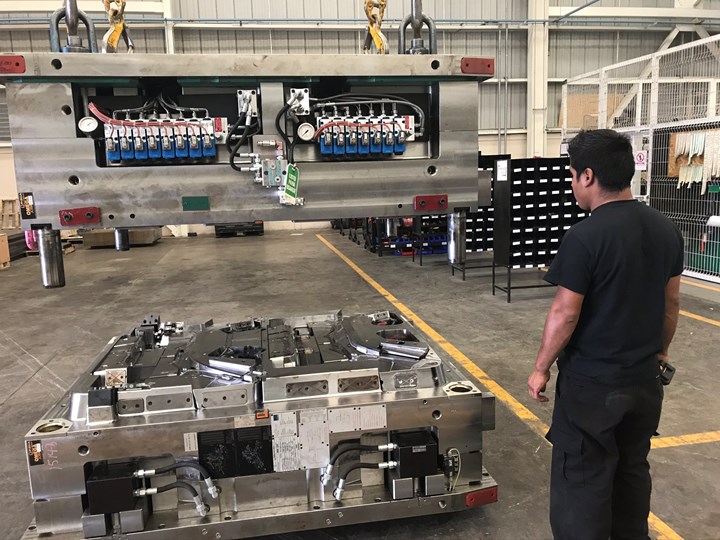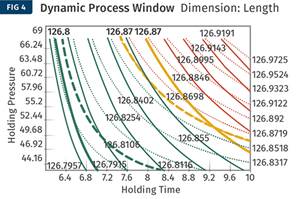Achieving Continuous Improvement Using SMED Programs
A good SMED quick changeover program can help optimize financial performance by converting non-value-add time into value-add time.
In the plastics manufacturing industry, implementing Single Minute Exchange of Die (SMED) is known to reduce changeover times. It also creates value by optimizing activity against time—all while reducing waste. While SMED’s value may be increased or reduced by marketplace demand and therefore the need for optimum throughput, improving changeover can be done under any economic condition, including today’s COVID-19 crisis and recovery phases. I’ll go into detail on how to successfully implement SMED while sustaining it for a more profitable future of your plastics manufacturing plant.

Injection molders must account for internal setup time—when the machine must be down—and external setup time, including activities that can be performed with the machine running.
The Five Steps of SMED
It’s important to understand the basics of SMED before moving forward. There are five steps in the traditional SMED process:
- Preparation: Ensure all tools are in position and working properly.
- Mounting and Extraction: The removal of current tooling after the production lot is complete and installation of new tooling before the next production run.
- Establishing Control Settings: Setting all the process controls prior to the production run (includes calibrations and measurements needed to verify machine and tooling set-up).
- First-Run Capability: This includes the necessary adjustments (re-calibrations and additional measurements) required after the first trial pieces are produced.
- Setup Improvement: The time after processing during which the tooling and machinery is cleaned, identified and tested for functionality prior to storage.
The creator of the SMED concept, Shigeo Shingo, believed that changeover time can be reduced by 59/60th. And while I agree that this impressive level of improvement is possible, sustaining it can be exceedingly difficult and is often complicated by changes in the cadence of manufacturing operations. Re-balancing entire manufacturing lines may be required to effectively deliver and sustain SMED excellence.
Improving Changeover Times
Actions taken to improve changeover times are categorized as the following:
- Internal Setup Time: Activities that must be performed while the machine is shut down, such as removing dies and tooling.
- External Setup Time: Activities that can be performed while the machine is operating, including reheating tooling for the next setup.
When it comes to the internal setup time, there’s a huge human element in assessing the work. The standards referenced must be fully understood in the context of the time the standard was developed compared to today. Controls, tools and the changeover process need to be continuously challenged to drive down the changeover time.
Adapting quick changeover tools to existing equipment can provide many improvement opportunities. Hydraulically driven and magnetic clamping system can shave several minutes per changeover, and they are safer and reduce maintenance costs. The system will eventually contribute to lower labor requirements since operators can now achieve what two or more maintenance technicians used to perform. And, there should be no wait time for the task.
Economic swings bring previous expedient decisions to light. Machine and/or process restrictions degrade production velocity as equipment that was optimized for a certain product is put into service on another part and results in profit erosion. This is where a good SMED quick changeover program can help optimize financial performance by converting non-value-add time into value-add time. By using a toolbox full of SMED-specific methods in a robust process, and by leveraging SMED experts who bring both historical and state-of-the-art technical knowledge into the equation, will achieve the quickest possible changeover time.
Why Training and Performance Monitoring are Important
Employee turnover and training shortfalls may create a wide range of performance issues on a single piece of equipment. Managers should analyze each changeover time. Are they consistent and indicate the process is being successfully repeated to achieve low variability in changeover times? Are these times consistent for each shift? If you do not have a solid training program and have granular performance monitoring, you can almost guarantee your changeover times will increase, which will cause chaos. Throughput velocities will be reduced, and work-in-process bottlenecks will result. The production quality and costs will soon be challenged. All too frequently, manufacturers do not recognize the symptoms until customer dissatisfaction occurs and financial penalties are assessed. To be successful, people require training and changeover times must be measured to ensure quick changeover value is sustained.
Case Studies: Let’s Go to the Tape
While working for a Tier 1 automotive supplier, we performed a SMED activity to reduce the changeover times at a plant in India. Changeover times were reduced from three hours on average to consistently less than one hour. This was accomplished through internal and external changeover operation analysis and videotaping. This video analysis method identifies areas that create unnecessary or misplaced activities that can be moved and/or eliminated, resulting in a streamlined changeover process.
Additionally, our team worked with a major plastics parts supplier where we helped overhaul their SMED program in order to further reduce changeover times. Upon arrival, we noticed all machines were equipped with magnetic platens (which makes quick bolt changes possible), and the changeover times were averaging over five hours, sometimes crossing shifts. Through analysis of internal and external operations, and moving internal activities to external ones, changeover times were reduced to less than one hour. The availability improvement also allowed the customer to bring back parts manufacturing that had been outsourced.
With many industries facing constraints in supply chains and lower demand as economies strive to regain a healthy cadence, changeovers for most manufacturers are going to be all too frequent. Maximizing changeover efficiency with a strong SMED program will drive improved profitability, helping you address the challenges that are ahead.
About the author: Bill Currence is the founder and managing partner of Cornerstone Consulting Organization (CCO). Currence has served in a variety of executive leadership consulting roles, leading project teams across the globe in achieving hundreds of millions of dollars in improved EBITDA and cash flow. He is a graduate of the United States Military Academy and played for the Army football team as a starting tight end. Currence served as an Army officer for 10 years between active duty and the reserves.
Related Content
Get Better at Using Foam for Your Molded Parts
Machine performance and process speeds are critical when using foam to reduce part weight while retaining part integrity.
Read MoreOptimizing Pack & Hold Times for Hot-Runner & Valve-Gated Molds
Using scientific procedures will help you put an end to all that time-consuming trial and error. Part 1 of 2.
Read MoreHasco Marks a Century in Mold Components, Mold Bases and Hot Runners with Cake and New Technologies
NPE2024: Cake, drinks and the unveiling of a new North American website providing online ordering in the U.S. and Canada for the first time are just some of the things happening at Hasco’s booth as it brings its year-long centennial celebration to Orlando.
Read MoreHow to Design Three-Plate Molds: Part 5
There are many things to consider, and paying attention to the details can help avoid machine downtime and higher maintenance costs. In this installment, the focus is on design and placement of sucker/puller pins.
Read MoreRead Next
For PLASTICS' CEO Seaholm, NPE to Shine Light on Sustainability Successes
With advocacy, communication and sustainability as three main pillars, Seaholm leads a trade association to NPE that ‘is more active today than we have ever been.’
Read MorePeople 4.0 – How to Get Buy-In from Your Staff for Industry 4.0 Systems
Implementing a production monitoring system as the foundation of a ‘smart factory’ is about integrating people with new technology as much as it is about integrating machines and computers. Here are tips from a company that has gone through the process.
Read More



























